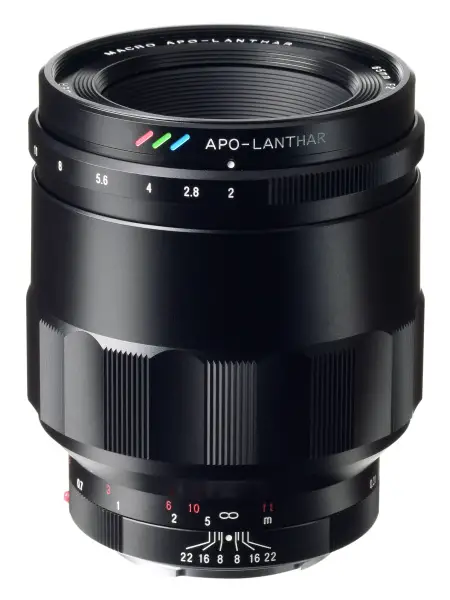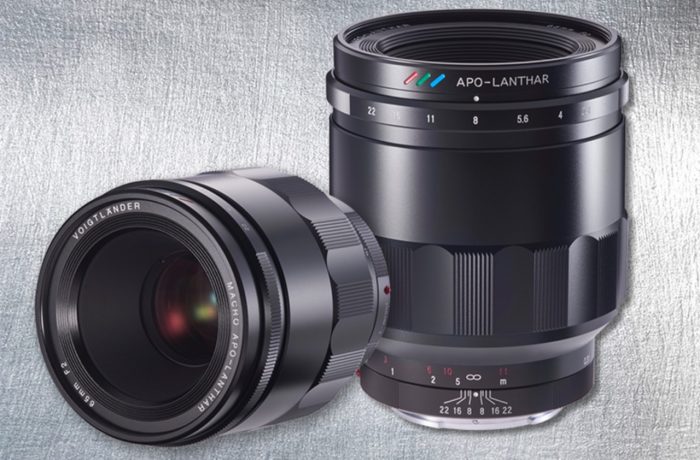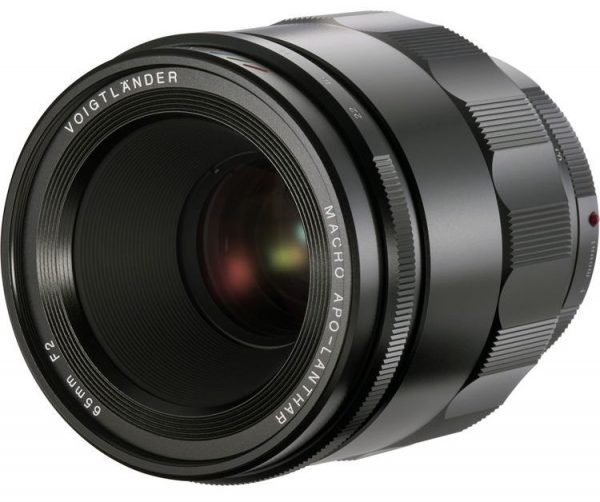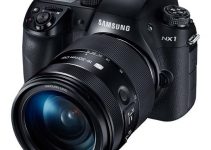Teased back at last year’s Photokina trade show, and announced at CP+ in Japan back in February, the Voigtlander MACRO APO-LANTHAR 65mm f/2.0 Aspherical lens for the super-popular Sony E-mount is now available to pre-order for $1059 USD and is expected to start shipping August 2nd. The Voigtlander APO-LANTHAR designation is quite the badge of quality, usually reserved only for especially high performance lenses in the Voigtländer lens line-up.
The Voigtländer MACRO APO-LANTHAR 65mm f/2.0 Aspherical, which inherits the classy “APO- LANTHAR” designation, is a high performance manual focus macro lens optimized for the imaging sensors of the current crop of Sony full-frame mirrorless cameras such as the Sony a9 and Sony A7R II.
Apochromatic optical designs that reduce the longitudinal chromatic aberrations of the three primary colours (RGB) of light to practically zero arose with the increasing popularity of colour film, but recently made their way quickly to the latest crop of digital sensors, which are growing not only in mega pixels, but also in the quality of light-gathering sites.

The optical performance of this lens, according to Voigtlander, rates as one of the finest in their history; and Voigtlander know a thing or two about making lenses, they’ve been at it for the past 2 centuries and then some. The latest Voigtlander benefits from a solid metal build, and a minimum focusing distance of just 31 cm (reproduction ratio of 1:2) through to infinity.
This being a Voigtlader lens means you get a manual focus and manual aperture lens, but it also features electrical contacts that enable the lens settings at image capture to be included in the EXIF information of the image data. Furthermore, the lens is installed with a distance encoder to enable support for 5-axis image stabilization on bodies with this feature, for example by providing distance to subject information used in X,Y shift compensation.

Voigtlander Macro APO-LANTHAR 65mm f2 Highlights
- Full frame Sony E-mount with electrical contacts
- Apochromatic optical design that eliminates chromatic aberrations
- Enhanced high performance utilizing aspherical lens surfaces
- Optical design optimized for digital imaging sensors
- Extremely solid and durable all-metal barrel
- Manual focus for precise focusing
- Maximum reproduction ratio of 1:2 at a minimum focus distance of 31 cm

Voigtlander APO-LANTHAR 65mm f2 Tech Specs
| Focal length | 65 mm |
| Aperture ratio | 1:2 |
| Minimum aperture | F22 |
| Aperture | 1/3 |
| Lens construction | 10 elments in 8 groups |
| Angle of view | 38° |
| Aperture blade | 10 |
| Minimum focus | 0,31 m |
| Maximum diameter | 78 mm |
| Length | 91,3 mm |
| Mount | E |
| Electrical contact: Exif data | available |
| Manual focus assistant | available |
| Weight | 625 g |
| Filter size | 67 mm |
| Color | black |
| Others | Pressure Fit Cap, Rear Cap, Lens Hood (metal) |
The new Voigtlander APO-LANTHAR 65mm f2 for Sony E mount can be pre-ordered from B&H for $1,059. In Europe, the MSRP has been set at €999 or £749 in the UK. Shipping is estimated for the first week of August.
Read more about the APO-LANTHAR from Voigtlander:
The history of the APO-LANTHAR begins with the HELIAR invented by Hans Harting in 1900. Despite its simple optical configuration of five elements in three groups, the HELIAR was a lens with superb depictive performance. As an example of the HELIAR optical formula still being valid in the present day, it is used in the currently available HELIAR Vintage Line 50mm F3.5, a lens known for its superb depictive performance. Furthermore, a HELIAR is recorded as being the lens used to take imperial portraits of Emperor Showa, and it is said the HELIAR lens was extremely highly regarded for its beautiful depictive performance and even treated as a family treasure by portrait photography businesses during the Showa period.
Moving forward about half a century from the birth of the HELIAR to 1954, Albrecht Wilhelm Tronnier developed a lens using the same five-elements-three-groups configuration as the HELIAR utilizing new glass types to achieve performance that exceeded the HELIAR. That lens was the APO-LANTHAR. The APO in APO- LANTHAR indicates an apochromatic optical design. The main characteristic of such a lens is that longitudinal chromatic aberrations caused by the different wavelengths (frequencies) of the three primary colours (RGB) of light are reduced to practically zero to achieve high-level colour reproduction. Colour film slowly gained popularity after its release in 1935, and one reason why the APO-LANTHAR was developed was to address a growing need to capture light more faithfully than possible with monochrome film.
The first camera to be fitted with an APO-LANTHAR lens was the 6 x 9 roll film rangefinder camera representative of post-war Voigtlander, the Bessa II. There were three different lens variations of this camera: APO-LANTHAR 4.5/100, COLOR-HELIAR 3.5/105, and COLOR-SKOPAR 3.5/105. The APO-LANTHAR 4.5/100 variation has red, green, and blue (RGB) rings indicating the apochromatic optical design engraved around the front of the lens barrel to differentiate it from the other versions as a special lens. Due to the rarity and high performance of the Bessa II fitted with APO-LANTHAR lens, this camera has become a legendary camera traded on the used market at high prices and the envy of camera collectors.
As homage to the RGB colours that differentiate the APO-LANTHAR from other lenses beginning with the BESSA II, the MACRO APO-LANTHAR 65mm F2 Aspherical also features three coloured dashes indicating the RGB colours at the front edge of the lens barrel.
[via DPReview]
Disclaimer: As an Amazon Associate partner and participant in B&H and Adorama Affiliate programmes, we earn a small comission from each purchase made through the affiliate links listed above at no additional cost to you.
Claim your copy of DAVINCI RESOLVE - SIMPLIFIED COURSE with 50% off! Get Instant Access!




